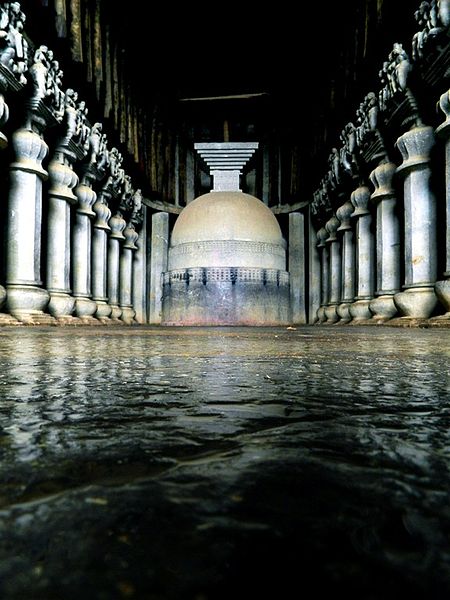The Tathāgatagarbha sūtras are a group of Mahayana sutras that present the concept of the "womb" or "embryo" (garbha) of the tathāgata, the buddha. Every sentient being has the possibility to attain Buddhahood because of the tathāgatagarbha.
Cave complex associated with the Mahāsāṃghika sect. Karla Caves, Mahārāṣtra, India
The Mahāyāna sūtras are a broad genre of Buddhist scripture (sūtra) that are accepted as canonical and as buddhavacana in Mahāyāna Buddhism. They are largely preserved in Sanskrit manuscripts, and translations in the Tibetan Buddhist canon and Chinese Buddhist canon. Several hundred Mahāyāna sūtras survive in Sanskrit, or in Chinese and Tibetan translations. They are also sometimes called Vaipulya ("extensive") sūtras by earlier sources. The Buddhist scholar Asaṅga classified the Mahāyāna sūtras as part of the Bodhisattva Piṭaka, a collection of texts meant for bodhisattvas.
Nepalese Thangka with Prajñāpāramitā, the personification of transcendent wisdom (prajñā), holding a Mahāyāna Prajñāpāramitā Sūtra
A Tibetan depiction of Nagarjuna receiving Mahāyāna sūtras from the Nāgas (on the right)
A painting by Nicholas Roerich (1925) depicting Nāgārjuna in the realm of the Nagas, where the Prajñāpāramitā was said to have been hidden
Folio from a manuscript of the Aṣṭasāhasrikā Prajñāpāramitā Sūtra depicting Shadakshari Lokesvara, early 12th century, opaque watercolor on palm leaf





